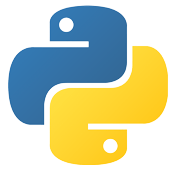In today’s data-driven world, the abundance of textual data presents both a challenge and an opportunity. Within these vast collections of text lie valuable insights waiting to be discovered. Text mining techniques offer powerful tools to extract meaningful information from textual datasets, enabling organizations to gain a competitive edge, make informed decisions, and unlock new opportunities.
Identifying Pain Points in Textual Data
Textual data presents unique challenges that can hinder effective analysis and extraction of valuable insights. It is crucial to identify and understand these pain points to develop robust solutions that address them. Here are some common pain points encountered when working with textual data:
Unstructured Formats
Textual data often comes in unstructured formats, such as raw text files, social media posts, emails, or online articles. Dealing with unstructured data can be challenging as it lacks a predefined structure or organization. Extracting meaningful information from unstructured text requires specialized techniques that can handle the variability and complexity of the data.
Noise and Inconsistencies
Textual data can contain noise, which refers to irrelevant or unwanted information that can distort the analysis. Noise can include typographical errors, punctuation inconsistencies, abbreviations, or slang. Dealing with noise requires careful preprocessing steps to clean and normalize the text, ensuring the accuracy and reliability of subsequent analysis.
Ambiguity and Polysemy
Textual data often contains ambiguous words or phrases that can have multiple meanings depending on the context. This ambiguity poses a challenge when trying to interpret and extract insights from the text. Additionally, polysemy refers to words that have multiple senses or interpretations. Disambiguating words and resolving their meanings accurately is crucial for accurate text mining.
Data Volume and Scalability
The volume of textual data continues to grow exponentially, making it challenging to analyze large-scale datasets efficiently. Traditional text mining techniques may struggle to handle the sheer volume of data, leading to performance issues and increased computational requirements. Developing scalable solutions that can process and analyze large amounts of text data is essential for effective mining.
Domain-Specific Challenges
Different domains and industries have their unique challenges when working with textual data. For example, in healthcare, understanding medical terminology and extracting relevant information from medical records can be complex. Legal documents may pose challenges related to understanding legal jargon and identifying critical legal concepts. Recognizing and addressing domain-specific challenges is vital for successful mining in various industries.
Sentiment and Opinion Analysis
Analyzing sentiment and opinions expressed in textual data is another pain point in text mining. Understanding the sentiment behind customer reviews, social media posts, or online comments can provide valuable insights for businesses. However, sentiment analysis is a complex task that requires robust techniques to accurately determine the sentiment expressed in the text.
Benefits of Text Mining Techniques

Text mining techniques offer numerous benefits that can revolutionize how organizations leverage textual data for decision-making and strategic planning.
Information Extraction: Unlocking Meaningful Insights
Information extraction techniques focus on extracting valuable information from textual data. By identifying entities, attributes, and their relationships, information extraction enables organizations to uncover hidden patterns, sentiment, and other valuable insights.
Information Retrieval: Finding Relevant Patterns
Information retrieval techniques help locate relevant patterns within textual data. By searching for specific words or phrases, similar to search engines like Google and Yahoo, information retrieval enables users to quickly find the most relevant information within large text collections.
Categorization: Organizing Text Documents
Categorization techniques categorize text documents into predefined topics based on their content. This capability is particularly useful in natural language processing (NLP) applications, where text documents need to be classified and organized for further analysis.
Clustering: Discovering Intrinsic Structures
Clustering techniques identify intrinsic structures within textual information and group them into relevant subgroups or “clusters.” This enables organizations to explore similarities, uncover themes, and gain a deeper understanding of their textual data.
Summarization: Condensing Textual Information
Summarization techniques generate concise versions of text while preserving the overall meaning and intent. Text summarization is invaluable when dealing with large volumes of text, as it allows users to extract key information quickly and efficiently.
Challenges Associated with Text Mining

Text mining encompasses a wide range of techniques and approaches to extract valuable insights from textual data. However, it also presents several challenges that need to be addressed for successful mining. Let’s explore some of the key challenges and potential solutions:
Preprocessing and Data Cleaning
One of the primary challenges in text mining is the preprocessing and cleaning of textual data. As mentioned earlier, textual data often contains noise, inconsistencies, and unstructured formats. To address this challenge, mining practitioners employ various techniques, such as:
- Tokenization: Breaking down the text into individual words or tokens.
- Normalization: Converting text to a standard format by removing punctuation, converting to lowercase, and handling abbreviations.
- Stop Word Removal: Eliminating common words that carry little semantic meaning, such as “the,” “is,” and “and.”
- Stemming and Lemmatization: Reducing words to their root form (stemming) or converting them to their base or dictionary form (lemmatization).
- Spell Checking: Correcting typographical errors and misspelled words.
By applying these preprocessing techniques, the quality of the textual data is improved, enabling more accurate analysis and insights.
Text Representation and Feature Extraction
Transforming textual data into a suitable representation for analysis is another challenge in text mining. This process involves converting text into numerical or categorical features that can be used by machine learning algorithms. Some common techniques for text representation and feature extraction include:
- Bag-of-Words (BoW): Representing text as a collection of unique words, disregarding their order, and considering their frequency of occurrence.
- Term Frequency-Inverse Document Frequency (TF-IDF): Calculating the importance of words in a document by considering their frequency in the document and their rarity across the entire corpus.
- Word Embeddings: Capturing semantic relationships between words by representing them as dense vector representations in a high-dimensional space.
- Topic Modeling: Identifying latent topics in a collection of documents to represent them in a more interpretable form.
Choosing the appropriate text representation technique depends on the specific task and the nature of the textual data. It is crucial to consider the strengths and limitations of each approach to ensure meaningful analysis and interpretation.
Domain-Specific Language and Terminology
Text mining often involves working with domain-specific language and terminology. Different industries and domains have their unique jargon, abbreviations, and specific vocabulary. Understanding and handling these domain-specific nuances is vital for accurate analysis and interpretation of textual data. Building domain-specific dictionaries, ontologies, or using specialized language models can help address this challenge.
Scalability and Efficiency
As the volume of textual data continues to grow, scalability and efficiency become critical considerations in text mining. Analyzing large-scale datasets requires efficient algorithms and computational resources. Distributed computing frameworks and parallel processing techniques can help address the scalability challenge by distributing the computational load across multiple machines or processors. Additionally, using sampling or data reduction techniques can also improve efficiency by reducing the size of the dataset while preserving key characteristics.
Text Classification and Information Extraction
Text mining often involves tasks such as text classification and information extraction, where the goal is to categorize documents into predefined categories or extract specific information from the text. Addressing these challenges involves developing robust machine learning models and algorithms that can accurately classify text or extract relevant information. Techniques like supervised learning, natural language processing (NLP), and deep learning can be leveraged to tackle these challenges effectively.
Handling Big Data
The exponential growth of textual data necessitates the development of efficient approaches to handle big data in text mining. Distributed computing, parallel processing, and cloud-based solutions are being explored to address the scalability and performance demands of text mining on large-scale datasets.
Multilingual Text Mining
As businesses operate globally, multilingual text mining has become increasingly important. Analyzing and extracting insights from textual data in different languages pose unique challenges. Developing robust multilingual mining techniques that handle diverse languages accurately is an ongoing area of research.
Ethical and Privacy Concerns
Text mining involves handling sensitive information, which raises ethical and privacy concerns. Respecting user privacy, obtaining consent, and ensuring data anonymization are critical considerations in mining practices. Establishing ethical guidelines and regulatory frameworks is essential to protect user privacy and maintain data confidentiality.
Best Practices for Text Mining
To make the most of text mining techniques, it is essential to follow best practices that ensure accurate and reliable results.
Data Preparation: Cleaning and Preprocessing
Data preparation plays a crucial role in text mining. Cleaning and preprocessing textual data involve removing noise, normalizing text, and identifying entities and their attributes. This step ensures data quality and enhances the accuracy of subsequent text mining processes.
Feature Selection and Engineering
Feature selection and engineering involve identifying relevant features within textual data and transforming them into a suitable format for analysis. This step enables text mining algorithms to focus on the most informative aspects of the data, leading to more accurate results.
Model Selection and Evaluation
Choosing the appropriate text mining models and algorithms is crucial for achieving accurate and reliable results. The selection process involves understanding the problem at hand, the characteristics of the data, and the specific goals of the analysis. Regular model evaluation helps ensure the chosen approach is delivering the desired outcomes.
Interpretation and Validation
Interpreting and validating the results of text mining techniques is vital for gaining insights and making informed decisions. Understanding the limitations of the models, conducting thorough validation, and incorporating domain knowledge are essential steps to ensure the reliability and relevance of the extracted insights.
Future Directions

The future of text mining holds exciting possibilities. Researchers and practitioners are exploring various areas to advance text mining techniques further:
- Deep Learning for Text Mining: Deep learning techniques, such as recurrent neural networks (RNNs) and transformers, show promise in improving text mining tasks like sentiment analysis, machine translation, and text generation.
- Integration with Domain-specific Knowledge: Incorporating domain-specific knowledge into text mining models enhances accuracy and relevance. Techniques like domain adaptation and transfer learning leverage existing knowledge effectively.
- Multimodal Text Mining: Integrating text with other modalities like images, videos, and audio provides richer insights. Multimodal mining enables the analysis of diverse data sources, leading to a comprehensive understanding of the underlying information.
- Explainable Text Mining: Ensuring interpretability and explainability of text mining models is crucial as they become more complex. Methods are being developed to make text mining models more transparent and understandable, allowing users to trust and validate the results.
Conclusion
In conclusion, text mining techniques offer powerful tools to extract valuable insights from textual data. By addressing the challenges, following best practices, and embracing future directions, organizations can unlock the full potential of mining and leverage its power to drive innovation and make informed decisions.
Ready to unlock the power of text mining and extract valuable insights from your textual data? Visit AI Data House to learn more about our text mining solutions and how they can help your business gain a competitive edge. Sign up for a free trial or schedule a demo to experience the benefits firsthand. Don’t miss out on the opportunity to transform your textual data into actionable knowledge. Get started today and discover the hidden treasures within your text!
Remember, extracting valuable insights from text can unlock a world of opportunities. Start harnessing the power of text mining today and gain a competitive edge in the digital age!










